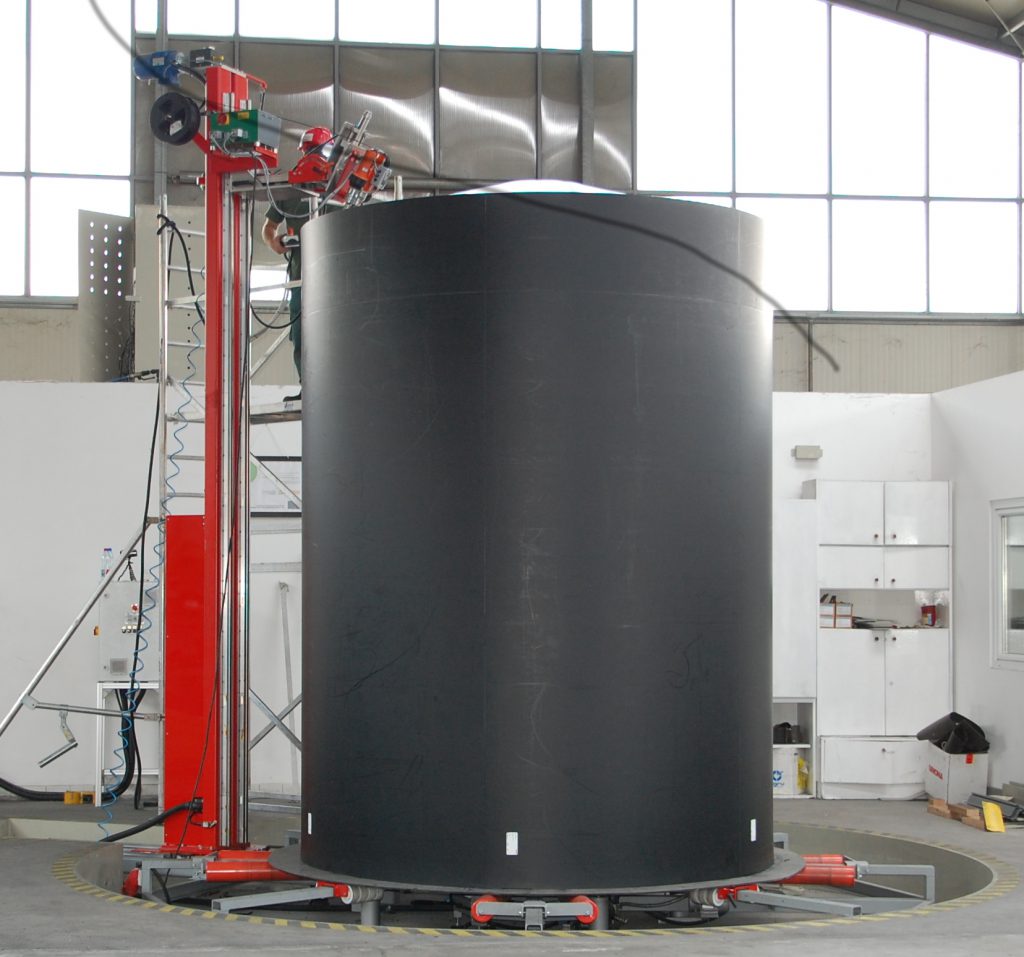Partnering for Success: Picking the Right Tank Welding Inspection Service Provider
Partnering for Success: Picking the Right Tank Welding Inspection Service Provider
Blog Article
Comprehensive Container Welding Examination for Industrial Safety and Regulatory Conformity
Making certain industrial safety and governing compliance within the realm of storage tank welding examinations is an essential facet of preserving functional integrity and mitigating prospective threats. The careful evaluation of weld quality, material thickness, and total container condition is vital in safeguarding versus environmental hazards and architectural failings. By diving right into the complexities of comprehensive tank welding inspections, a much deeper understanding emerges of the diverse techniques employed to maintain industry requirements and promote safety and security procedures.
Significance of Tank Welding Assessments
Carrying out routine and complete storage tank welding inspections is necessary in ensuring the structural honesty, security standards, and regulatory conformity of commercial storage tanks. These assessments play a critical duty in determining any prospective issues or weaknesses in the welded joints that can compromise the overall integrity of the tank. By spotting these issues beforehand, companies can take proactive steps to resolve them without delay, thereby protecting against pricey repair services, environmental contamination, or, in the worst-case situation, tragic failings.
Routine container welding assessments also assist companies adhere to industry policies and requirements stated by authorities such as the American Oil Institute (API) or Occupational Safety And Security and Health Administration (OSHA) Failing to meet these demands can result in fines, lawful consequences, and even the suspension of procedures. Tank Welding Inspection Service. For that reason, spending in thorough tank welding examinations not only safeguards the wellness of employees and the surrounding setting however likewise secures the company's online reputation and profits in the lengthy run
Trick Elements of Weld High Quality Analysis
Guaranteeing the quality of welds entails a precise evaluation of key elements that contribute to the structural integrity and integrity of commercial containers. One critical aspect of weld quality assessment is the assessment of weld infiltration. By comprehensively reviewing these essential components, assessors can help ensure that bonded joints meet the needed standards for safety and security and regulatory conformity in commercial tank construction.
Material Density Examination Strategies
In the context of weld quality evaluation, an integral aspect to take into consideration is the utilization of material thickness examination strategies. Accurate measurement of product density is crucial in making sure the structural honesty and safety of welded tanks. Various non-destructive screening (NDT) methods are utilized for analyzing product density, consisting of ultrasonic testing, radiographic testing, and magnetic fragment assessment. Ultrasonic screening includes using high-frequency acoustic waves to identify product thickness by determining the moment taken for the sound waves to take a trip with the material and reflect back. Radiographic screening makes use of X-rays or gamma rays to create photos revealing material thickness. Magnetic fragment assessment is effective for detecting surface and near-surface issues that might impact material density. These methods not only assist in evaluating the density of materials yet likewise aid in recognizing any potential defects or discontinuities that might compromise the weld high quality and overall integrity of the tank structure. By using these material thickness assessment strategies, markets can ensure conformity with read safety standards and policies, thus improving total functional safety and security and dependability.
Container Problem Exam Techniques
An important facet in preserving the honesty and safety and security of bonded containers is the detailed assessment of tank conditions via trusted inspection methods. Container condition exam methods play a crucial function in making sure the structural stability and operational performance of industrial tanks. Aesthetic examination is a key technique used to evaluate the outside problem of tanks, seeking signs of corrosion, leakages, or physical damage. In addition, non-destructive testing strategies such as ultrasonic testing and radiographic screening are used to identify internal imperfections, weld issues, and material destruction that may jeopardize the tank's performance. Tank Welding Inspection Service. Furthermore, magnetic bit evaluation can determine surface fractures and defects that are not noticeable to the naked eye. These assessment click here for more approaches provide useful understandings into the general wellness of the container, enabling early detection of prospective problems and promoting prompt upkeep or repairs to ensure compliance with security regulations and industry criteria. Routine inspections using these techniques are necessary for stopping disastrous failures and ensuring the long-term reliability of welded tanks.
Advantages of Routine Examination Practices
Routine examination methods not just protect versus potential problems detected during container condition assessment methods however additionally act as aggressive measures in maintaining the architectural integrity and functional performance of welded storage tanks. By performing regular evaluations, commercial centers can identify any type of indicators of corrosion, fractures, leakages, or various other defects in the tank welds immediately. This very early discovery enables timely repair services or upkeep treatments, preventing little problems from rising right into bigger, more costly issues that might jeopardize safety and security or bring about regulatory non-compliance.

Conclusion

To conclude, comprehensive container welding evaluations are vital for guaranteeing commercial safety and security and governing conformity. By performing routine examinations and evaluations of weld top quality, product thickness, and storage link tank problem, companies can identify prospective threats and prevent costly mishaps. Applying a proactive method to assessment techniques can help maintain the structural stability of containers, shield the environment, and guarantee the security of employees and the bordering area.

Report this page